EPA Science Matters Newsletter: Volume 2, Number 6
Published November / December 2011
Executive Messages
- Executive Message
EPA Research: A Year of Innovation
A message from Peter W. Preuss, Ph.D., Chief Innovation Officer for EPA’s Office of Research and Development
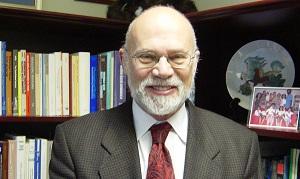
For decades, EPA has conducted outstanding research in support of the Agency’s mission to protect human health and the environment. Through those efforts, EPA scientists and engineers have become widely recognized as leaders in the environmental research field.
Building incrementally on that impressive record of achievement, however, will not be enough to meet today’s complex, often far-reaching environmental challenges. Therefore, we must align our science and research efforts toward a new vision focused on sustainability, and built on a foundation of innovation.
To achieve that goal, last year EPA leadership tapped a small team of scientists to form an innovation team. The team was tasked with helping the Agency embrace innovation in all its forms, systematically advancing new ways of thinking and problem solving throughout EPA, and forging new partnerships with other federal agencies, industry, and the broader scientific community. Being naturally inquisitive, creative, and bold, it has not been difficult to excite and engage the scientists at EPA in this effort.
In just a year, the innovation team and EPA researchers have forged ahead on a three-pronged innovation campaign that has already yielded exciting results:
One: Pathfinder Innovation Projects
We launched EPA Research Pathfinder Innovation Projects (PIPs), an internal competition for Agency scientists. We asked for innovative research proposals that would help us help us advance science for sustainability at EPA. We received 117 proposals from almost 300 scientists and awarded 12 winners with seed funding to pursue their creative solutions to environmental and human health challenges.A second round of project proposals is currently underway, with equally impressive participation thus far. It is clear that EPA scientists at every level are energized by the opportunity to innovate.
Two: Crowd Sourcing
We also began developing a program to engage the public, and cultivate partnerships that enable us to harness scientific talent wherever is exists through crowd-sourcing challenges.Whether tracking down a better method to measure low concentrations of acrolein in air, or developing sensors and apps for community science, the innovation potential of "the crowd" can help identify environmental solutions in a faster, cheaper, and more efficient manner than ever before. Many agencies across the federal government have recognized the power and potential of this approach. For example, EPA is working closely with the Department of Health and Human Services, the Agency for International Development, and others to use this new and exciting tool.
Three: Signature Projects
Finally, we have spent significant time this year focusing on signature projects, championing them, and working to help them succeed. Whether it's working with the U.S. Army to achieve “Net Zero” energy and water consumption at military bases, or harnessing the tools and principles of green chemistry to create alternative chemical solvents, these signature projects exemplify our goal of advancing sustainability through innovation.EPA research has embraced sustainability as an important and necessary goal for the future of the planet, our economy, and our society. To achieve it will require asking different questions, thinking about challenges differently, and seeking innovative solutions.
Innovation is the key for achieving sustainability, and thus instead of being an “add on” to our research it will be interwoven into everything our scientists and engineers do, building a new foundation. That work has already begun. We have come a long way in 2011, and we are excited to embrace another year of innovation.
Sincerely,
Peter W. Preuss, Ph.D.
Chief Innovation Officer
Office of the Assistant Administrator for Research and Development
U.S. EPA
GEMS: Great Environmental Moments in Science
- Listening to Loons: Mercury and MERGANSER
An EPA-led collaborative effort produces a model for predicting mercury levels in New England fish and loons.
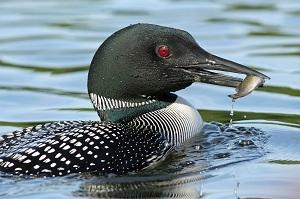
The distinctive, almost haunting call of the common loon is to New England what the howl of the wolf is to the American West: it’s the sound of wilderness. If you’re fortunate enough to be listening to a loon, you’re almost certainly surrounded by forests and lakes, and a long way from the nearest office building, shopping center, or interstate. But the seemingly pristine waters of even the most remote New England lake—loon habitat—may contain troubling levels of mercury.
The loon’s diet is composed exclusively of fish. And while all 50 states currently have fish consumption advisories for some of its rivers and lakes due to elevated mercury levels, water bodies in New England are particularly vulnerable, the unfortunate result of geography and chemistry. New England is located downwind from some major industrial emissions sources.
And when mercury does arrive, it is likely to find its way to wetlands and water, where it is converted through chemical reactions into methylmercury, a form that is not only hazardous, but easily absorbed into living tissue and passed along the food chain.
To protect human health, advisories are issued to warn people not to eat fish from lakes where the fish tissues exceed EPA’s recommended levels for mercury consumption. Loons, of course, don’t have the option of avoiding fish. High mercury levels can disrupt the bird’s reproductive success.
To get a better idea of the health of New England’s lakes, EPA researchers and their partners developed a model that estimates current and future mercury concentrations in fish and loons for more than 4,400 lakes across the region. The model is the Mercury Geospatial Assessments for the New England Region, or MERGANSER (the name of another aquatic bird).According to biologist Diane Nacci, Ph.D., one of the EPA scientists on the development team, MERGANSER “will help scientists to better understand factors that increase risk of mercury contamination in wildlife, regulatory agencies to prioritize their sampling efforts, and the public to better understand the risk associated with eating fish from a particular lake in New England.”
The model uses geographical information systems (GIS) technology to link fish mercury levels and spatial, water quality, and environmental data for 20-acre and larger lakes. The model was developed using fish mercury levels stored in the EPA’s Wildlife Database.
MERGANSER has many potential uses. It predicts whether fish mercury levels for a given lake will exceed EPA’s recommended human health criteria limit of 0.3 parts per million (ppm). The model can also help scientists determine whether mercury levels in a given lake are likely to result in reproductive, behavioral, or physiological changes in loons.
Another aspect of MERGANSER is that it predicts how mercury levels will fluctuate in the face of changing environmental conditions. For example, users could address such questions as: “If atmospheric mercury declined by 10 percent, how much would fish mercury decline in my lake? Or in every lake in Massachusetts?” It allows users to identify areas where fish mercury levels will change most if environmental conditions change.
Working with a model offers some advantages over reliance on collecting fish specimens or loon feathers for chemical analysis in a laboratory. With so many lakes across the region, MERGANSER can be used to identify those where mercury levels are likely to be a concern. This can help officials target field sampling operations, saving resources in a time of shrinking budgets. “We obtain a lot of data without actually having to visit a site…that is the real payoff and innovation of MERGANSER,” explains EPA research ecologist John Johnston, Ph.D.
Among other uses, the researchers hope that the tool will help health officials to identify lakes that are good candidates to be removed from advisories—reopening them to fishing activities—while actions are taken to reduce mercury emissions.
The MERGANSER methodology also has the potential to be applied in other areas of the country. “We’ve provided a framework and initial modeling results that researchers in other regions of the country could use as a starting point using local data,” says EPA environmental scientist Alison Simcox, Ph.D. “MERGANSER makes maximum use of existing data. And that’s rarely done,” she explains.
Researchers from multiple EPA offices collaborated with partners from the U.S. Geological Survey, research institutes, and state environmental organizations to establish MERGANSER. “It’s rare to be able to pull a team like this together and keep it together for almost a decade,” says Simcox.
The developers of MERGANSER intend to share the model through a publicly available web-based interactive tool and publication in a scientific journal. Johnston notes that “the methodology is going to be published in a pretty transparent way…and then the database will be shared because the more we can make it available and the easier it is to use the better for everyone.”
Learn More
- MERGANSER website
(Includes link to Fact Sheet: MERGANSER: Predicting mercury levels in fish and loons in New England lakes.) - EPA Mercury web site
- Human Health Criteria - Methylmercury Fish Tissue Criterion
- MERGANSER website
- Measuring Sustainability
EPA scientists explore how to measure prosperity and environmental quality across the San Luis Basin, a large, rural area in south-central Colorado.
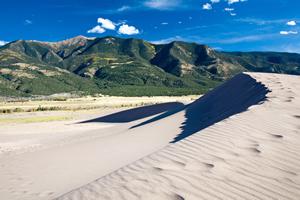
“There is no definition of good health; however, you know if your health is getting better or worse,” says Heriberto Cabezas, Ph.D, senior science advisor to the Sustainable Technology Division in EPA’s Office of Research and Development. Cabezas and colleagues Matthew Hopton, Ph.D. and Matthew Heberling, Ph.D. recently finished co-leading a collaborative pilot study designed to help scientists know whether the environmental health of a region is declining or improving. He and his research partners explored ways to measure and monitor whether a large area of south-central Colorado, San Luis Basin, has been moving toward or away from sustainability.
The ultimate goal of the research is to provide information that will help decision makers determine if a given region is in on a sustainable path.
Sustainability is a simple but powerful principle that recognizes that the natural environment is the foundation for human survival and well-being. Achieving sustainability means creating and maintaining the conditions with which people and nature can coexist in productive harmony—conditions that provide people with social, economic and other benefits—today and in future generations. Developing the science and engineering that people need to move in that direction is the “true north” of EPA’s collective research and development efforts. (See True North: Sustainability Research at EPA, SM March–April, 2011.)
As one can imagine, assessing and measuring something as broad as sustainability across a large area is a major challenge. To start, Cabezas and his co-workers sought research partners from a broad spectrum of disciplines. He assembled a multidisciplinary team with the capabilities and expertise to examine several fundamental components of an environmental system and how these components relate to key aspects of human well being, including social and economic factors.
In the San Luis Basin, the team found an ideal research site for their pilot study. The area is large enough to require complex data collection and analysis, but somewhat limited in scope with easily defined, natural hydrological boundaries and a limited population (around 50,000). Large amounts of publicly owned land simplified access for data collection and environmental monitoring. In addition, government officials from EPA’s local Region 8 (mountains and plains) and the National Park service expressed support for the study.
Approximately the size of Massachusetts, the area contains seven counties, the Upper Rio Grande River Basin, the San Luis Valley, and the Great Sand Dunes National Park and Preserve.
The team set out to develop a straightforward, affordable method to measure and monitor sustainability for the area. To do so, researchers set three primary objectives: (1) determine if existing historical data sets could be used to estimate sustainability at a regional scale; (2) calculate sustainability metrics through time (1980–2005); and (3) compare and contrast the results they found to determine if the region is moving toward or away from sustainability.
Cabezas and the team utilized available environmental, economic, and social data to calculate sustainability across four different metrics (standards of measurement). Each metric provides insight into important sustainability measurements. The “ecological footprint” metric, for example, linked the total area of biologically productive land available with measurements of human consumption and waste generation. An aggregate calculation of how much “natural capital” is being used or conserved (the “Green Net Regional Product” metric) was another. The researchers used other metrics to explore aggregate measurements of energy flows and inputs (the “Emergy” metric), and the overall stability and order of natural systems (“Fisher Information and Order”).
Together, the four metrics provide information to answer basic questions central to determining sustainability: How well can a region cope with change? How healthy is it economically? Is its energy use self-sufficient? Is its human population causing ecological damage?
An example of how using sustainability metrics can illuminate what threatens a region’s long-term sustainability is the snowpack found on the high mountains surrounding the San Luis Valley. “The existence of stored water at high elevations allows all of the geopotential energy of this water to be released in a short period of time, and in the process, it recharges the groundwater and maintains unique geological an ecological features of the valley like the Great Sand Dunes and wetlands. One consequence of this fact is that the natural and agricultural systems of the region are vulnerable to climate changes that affect the snowpack,” Cabezas and fellow co-authors point out in San Luis Basin Sustainability Metrics Project: a methodology for evaluations regional sustainability, a peer-reviewed EPA publication of the project’s findings.
When all their calculations where completed, the team found evidence that over time the area was slightly trending away from a sustainability. “The trend away from sustainability is slight, so our advice to the local community in the San Luis Valley and to EPA Region 8 was that while no immediate corrective action is warranted, plans do have to be developed to move the trend back to sustainability” explains Cabezas. “Action is being taken to do that exactly. The first step is the awarding of an EPA contract for a third party to work with Region 8 and the local community in the San Luis Basin to implement the metrics and methods developed as part of the project in local decision making. The contract is expected to be awarded early in 2012.”
Now that the major part of the pilot has concluded, Cabezas hopes that an organization will step up to continue monitoring the San Luis Basin. The team has developed user interfaces and spreadsheets to calculate the metrics and is ready to provide any technical support that the community needs. “The next part of the project is to work with the public in developing a means of implementing these ideas into public decision making,” he says.
Cabezas and the team were recognized with the 2011 Science Award from the EPA Region 8 Administrator. “This was the first place anywhere that this work has been tried, so the project was the proof of concept,” says Cabezas. Following its success, a second project using Puerto Rico as a test site is planned under the leadership of Drs. Hopton and Heberling.
Learn More
- EPA Releases Latest Community Multiscale Air Quality Model
New version offers tools for controlling air pollution and studying climate change.
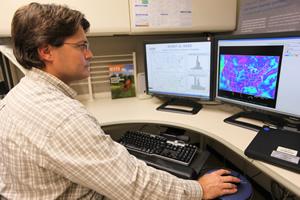
This fall, EPA scientists released a new version of its groundbreaking Community Multiscale Air Quality modeling system. Earlier versions of this state-of-the-science modeling system (known as “CMAQ”) have been used by EPA and states for more than a decade to design emission control strategies needed to meet and maintain national air quality standards. The National Weather Service has been using this model for a number of years to produce daily U.S. forecasts for ozone and air quality.
The release of the new version of CMAQ (version 5.0) will give researchers additional tools for studying modern-day air quality issues, including the intercontinental movement of air pollution and how it may affect air quality and climate change.
CMAQ 5.0 includes the latest developments in air chemistry and atmospheric science and will allow CMAQ to take advantage of improvements in computational ability, said EPA scientist Rohit Mathur, who has led the development effort.“It’s truly a multidisciplinary modeling system, which brings advances in physical, chemical, mathematical, and computational sciences into one framework,” Mathur said.
The CMAQ modeling system unites three kinds of models: meteorological models, emissions models, and an air chemistry-transport model. Using data about land usage, meteorology, and emissions, CMAQ simulates the way pollutants, such as particulate matter and ozone, move through the atmosphere. The system allows states and regulatory agencies to examine the potential impacts of different air quality management strategies to determine the best way to manage pollution in their community, region, or state.
CMAQ’s Framework
“Up till now,” Mathur said, “CMAQ has been run as a two-step model. CMAQ’s driving meteorological models were run in sequence, taking hourly meteorology data, including wind speed and direction, temperature, and solar radiation, and feeding them into an air chemistry model to calculate air quality.”
The new CMAQ 5.0 model includes the capability to use up-to-the minute data in its meteorology and chemical transport models.
“Instead of running the models in sequence as done previously, the meteorology and air chemistry-transport models in CMAQ 5.0 are coupled and synchronized to interact in feedback loops on the fly, thus providing more accurate forecasts that reflect interactions between pollution and weather,” Mathur said.
EPA scientists are currently using CMAQ 5.0 to simulate air quality at smaller, finer spatial resolution settings, such as individual towns and cities. They are also expanding the model’s spatial scale to include the entire northern hemisphere.
The ability to apply the modeling system on the hemispheric scale will allow scientists to better understand the ways that air pollution moves around the globe and provide much-needed information on intercontinental transport for decision makers.
“The atmosphere is vast, and pollutants move from one part of the globe to the other,” Mathur said. “As air quality regulations become stricter, we need to be able to properly account for what is typically called ‘background pollution’—that is, pollution that is not created locally, but is essentially imported from elsewhere into the United States.”
Community Based
An aspect of CMAQ that sets it apart from other air quality models in the world is its community-based development. Instead of keeping the CMAQ model development strictly in-house, EPA has worked with the University of North Carolina at Chapel Hill to create the Community Modeling and Analysis System (CMAS)—an outreach center for air quality modelers and researchers around the world.
“It takes a large infrastructure to support this kind of system development,” said Kenneth Schere, EPA senior science advisor. “There are very few modeling groups that use the community model of development.”
“CMAQ has become quite a popular system with thousands of users around the world,” Schere added. “Their input has helped us improve the system. Getting feedback about how the model performs under different conditions has helped us to better focus our research.”
Through the Community Modeling and Analysis System EPA is able to distribute new versions of CMAQ. CMAQ users can also enroll in training courses on the model through the CMAS center and collaborate with other users using the center’s listservs. The center hosts an annual user conference to encourage the exchange of ideas and best practices. About 250 CMAQ users attend each year.
CMAQ’s community-based development has been influencing the expansion of the model’s use around the globe. The model is run by thousands of users in more than 50 countries worldwide. For example, the U.K. uses the model to produce its daily air quality forecasts, and the U.K. Department of Environment, Food, and Rural Affairs—a governmental regulatory agency—recently decided to use the CMAQ model for the development of its national air quality policies.
The model is even making its way to India. Earlier this year, EPA researchers were invited by the Indian government to offer training on the model to Indian researchers so that the government could use the tool to understand pollution in their country.
Training researchers from the Indian government to use the model will also help EPA’s researchers by increasing the amount of world-wide data available in the CMAQ model. This, in turn, will allow researchers to gain a broader picture of the implications of intercontinental transport of air pollution.
Ultimately, CMAQ 5.0 makes the modeling system a more widely-applicable, accurate tool for scientists and policy-makers who deal with air quality. Air and climate scientists will be able to apply CMAQ to new, important research questions, and regulatory bodies will be able to create more cost-effective policies that better protect human health and the environment.
Learn More
- Meeting the President: Our PECASE Story
EPA scientists Gayle Hagler and David Reif share their experiences receiving the government’s highest honor for early career scientists and engineers —and meeting President Barack Obama.

Two EPA scientists were recently bestowed with the Presidential Early Career Award for Scientists and Engineers (PECASE). The award recognizes excellent research and leadership in the sciences, and is the highest honor given by the U.S. government to outstanding science and engineering professionals in the early stages of their independent research careers.
Dr. Gayle Hagler and Dr. David Reif are the EPA award recipients.
Dr. Hagler was nominated for leading research in the development and use of new technologies, such as electric vehicles and geographic positioning systems, to measure and map air pollutant emissions near roadside locations. She also researched how roadside landscaping can reduce the effects of harmful air pollutants. Dr. Reif was nominated for developing tools for prioritizing and profiling chemicals for potential toxicity to human health and the environment, as well as studying the various subsets of childhood asthma in order to develop more personalized diagnoses, management, and treatment of the disease.
The two scientists share their experiences winning such a prestigious award—which included a trip to the White House to meet the President—with Science Matters.
Here’s their story.
Hi everyone, Gayle Hagler and David Reif here…writing to share some of our experiences receiving the Presidential Early Career Award for Scientists and Engineers (PECASE).
Pre-award events
David: When we first heard about the award in an e-mail from the White House Office of Science and Technology Policy (OSTP), it came with explicit instructions that we “not share news of your award with anyone outside of your immediate family” until the White House made its official press release. I must have been wearing a silly grin that entire week until the official announcement. Gayle: I was excited but anxious about all the forthcoming attention. I went shopping for a suit to wear, because it had been quite a long time since I had to wear one! David: We also learned that scheduling with the President is a little bit uncertain (let’s say, his plate is pretty full), but we were very excited that there was at least a tentative plan to meet him at the White House.
Award events
David: The ceremony took place on Friday morning at the Smithsonian Museum of Natural History Exit. I got a kick out of that because it has been my favorite museum since I was a little kid. Gayle: One of my favorite moments was seeing that the former president of my alma mater (Dr. G. Wayne Clough) was on the program to open up the awards ceremony, as he is now the Secretary of the Smithsonian. I had to hold back from shouting Georgia Tech football cheers when he took the stage. David: I enjoyed listening to people in the room politely gasp (or giggle) as we all tried to understand the impressive technical jargon in the awardees’ citations, like “quantum metrology” or “photoactivated localization microscopy” Gayle: We both really appreciated having a chance to meet and take pictures with high-ranking representatives from the White House, John Holdren from OSTP, and EPA, Lek Kadeli from our own Office of Research and Development.
Going to the White HouseDavid: After going through round after round of security checks to get into the White House, we got to wander around the East Wing while waiting for the President to arrive. Then we heard the helicopters… Gayle: I described the commotion to my family as a room full of scientists pressing their faces up against the windows and shrieking with excitement. David: After watching President Obama exit Marine One Exit, they had us line up for the photo. When he eventually walked into the room, everyone erupted into spontaneous applause. Gayle: Apparently he was only scheduled to take a photo and then leave. We were thrilled that he took some time to talk off-the-cuff and shook hands with each one of us. It was an unforgettable experience. David: We weren’t allowed to take pictures (or even touch our cell phones) while in the White House, so the best I could do was take a picture of my hand that had shaken the President’s hand immediately after. Gayle: Why didn’t I think to do that?
Parting Thoughts
David: It was a tremendous experience, but since this was an early-career award that basically says, “We like what you’ve been doing—now go prove us right,” I guess it’s back to work. Gayle: I just want to hug everyone in the EPA that helped me along the pathway that led to the chance to shake hands with our President. I’m now in a flurry with a bunch of others getting ready to leave for a field study…definitely right back to work!
Learn More
- Answering Questions about EPA's Plan to Study Hydraulic Fracturing
EPA scientist shares information about a recently released research plan.
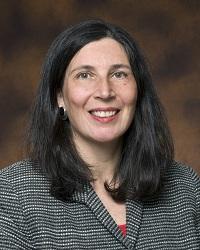
Nathan Gentry, the host of the Science Matters podcast sat down with EPA scientist Jeanne Briskin, who helped lead the design of the Agency’s recently-released Plan to Study the Potential Impacts of Hydraulic Fracturing on Drinking Water Resources (190 pp, 2.48 MB, About PDF).
Here are some highlights adapted from their discussion. Listen to the entire conversation.
(MP3, 6.5 MB)Nathan Gentry: Hydraulic fracturing, also known as “fracking,” has been in the news a lot lately. I think a good place for us to start is: what is fracking?
Jeanne Briskin: Hydraulic fracturing is a method to get natural gas or oil from petroleum bearing rocks or geology.First, you take water and mix in chemicals and sand, and inject that underground at high pressure to fracture the rock that contains the mineral resource, the natural gas or oil. That creates surface area for the gas or oil to flow up to the surface.
Nathan Gentry: Why is the EPA study so important? How does the science matter?
Jeanne Briskin: People are very interested in hydraulic fracturing because they are interested in the both the resource—the gas and oil that can be produced domestically here in the United States—and because some people have concerns about the environmental and public health impacts that they fear may be associated with hydraulic fracturing.
Nathan Gentry: What was your role in the formulation of the study plan?
Jeanne Briskin: I serve as a study coordinator, working with research scientists all over the country to identify the key pieces of research that we think are necessary to answer our primary research question. That is: are there any impacts of hydraulic fracturing on drinking water resources? And if so, what might be the causes, or drivers of those impacts?
Nathan Gentry: Were there opportunities for input from the public or outside scientists to plan the study?
Jeanne Briskin: Yes. There was an unprecedented amount of opportunity for many people to provide input to the study.
We had stakeholder meetings in four different states across the country. Thousands of people attended the meetings, and we received hundred of comments. We were able to take those comments together with comments from technical experts that make up our peer review panel to formulate our study plan.
Nathan Gentry: What did you learn from all that public input?
Jeanne Briskin: We learned that it’s important for us to take a broad look at hydraulic fracturing and the potential impact on drinking water resources.
As endorsed by EPA’s Science Advisory Board, we are looking at the entire water cycle when it comes to hydraulic fracturing: from water acquisition through the fracking process, to the creation and disposal of wastewater associated with the fracking process.
Nathan Gentry: EPA describes the study as “scientifically rigorous.” Can you explain what that means?
Jeanne Briskin: We are going to use state-of-the-art science—using the most up-to-date analytical chemistry methods, for example, in the water sampling we are doing. We are making sure we get input from technical experts from industry all over the country, so that we have a really good technical appreciation for the technology.
In addition to working with EPA’s best scientists from all disciplines relevant to the study, we’ve had our study plan peer reviewed. The results of the research will be peer reviewed by the premiere science panel, the EPA science Advisory Board. This independent group of national experts will go through our work with a fine toothed-comb to make sure it stand up to the highest quality standards and has well-supported conclusions.
Nathan Gentry: What is the number one question you get from those interested in the study?
Jeanne Briskin: That’s a good question. The number one question we get depends on who is asking: “why are you—or are not—studying my particular area of interest?”
So for us, it’s really a matter of understanding carefully what the underlying concern is for the person asking the question. Then we can show them how the science is addressing their concern, or show them how their particular area of concern is really outside of the charge EPA has been given from Congress.
Nathan Gentry: When do you expect results of the study to be released?
Jeanne Briskin: We expect a first report of findings to come out in 2012, and a second report with the remainder of the findings to come out in 2014.
Learn More
- A Major Step Towards Cleaner Water and Soil
EPA releases a pivotal health assessment addressing the health effects of trichloroethylene.

A major milestone for the U.S. Environmental Protection Agency (EPA) and more importantly, the protection of human health and the environment, was achieved on September 28, 2011, with EPA’s release of its much anticipated final health assessment for trichlorethylene (TCE).
TCE, a colorless liquid, is used mainly as a solvent to remove grease from metal parts and other cleaning operations. It is also an ingredient used in paint and spot removers. TCE was one of the contaminants identified in well water in a case made famous in the Hollywood motion picture “A Civil Action” starring John Travolta and Robert Duval.
The TCE final assessment was posted to EPA’s Integrated Risk Information System (IRIS) database, an internationally recognized human health assessment program that evaluates risk information on health effects that may result from exposure to environmental contaminants.
While the IRIS database contains high-quality human health information on hundreds of chemicals of concern, the completion of the TCE assessment is especially notable due to the chemical’s volatile nature and widespread use as a chlorinated solvent.
TCE is one of the most common man-made chemicals found in the environment and is present at hundreds of Superfund sites across the country. It has also been detected in groundwater and is able to move from contaminated water and soil into the indoor air of overlying buildings, a major public health concern. The assessment concludes that TCE is carcinogenic to humans and poses a human health hazard for effects on the central nervous system, the kidney and liver, the immune and male reproductive system, and the developing fetus.
The final assessment’s release marks a major accomplishment for the Agency as it provides federal, state, local and private decision makers with much needed cancer and non-cancer toxicity values for TCE, allowing them to make important risk management decisions to protect public health. Additionally, it allows for better understanding of the risks posed to communities from exposure to TCE in soil, water and air.
"This assessment is an important first step, providing valuable information to the state, local and federal agencies responsible for protecting the health of the American people," said Paul Anastas, assistant administrator for the EPA's Office of Research and Development. "It underscores the importance of EPA's science and, in particular, the critical value of the IRIS database for ensuring that government officials and the American people have the information they need to protect their health and the health of their children."
EPA’s TCE assessment has undergone several levels of peer review including, agency review, interagency review, public comment, external peer review by EPA’s Science Advisory Board and a scientific consultation review in 2006 by the National Academy of Sciences.
The final release of the TCE assessment is a testament to the success of the recently improved IRIS process, restructured in 2009 to reinforce independent review and ensure the timely publication of assessments. In July 2011, EPA announced further changes to the IRIS program in response to recommendations from the National Academy of Sciences. EPA will continue to strengthen IRIS in an effort to ensure that the best possible science is used to protect human health and the environment from chemicals like TCE.
Learn More
- What's in Your Water
EPA researchers are developing a library of natural organic matter samples to support and advance drinking water research.
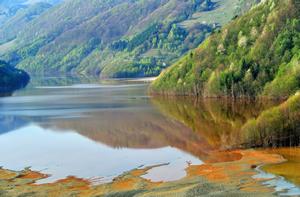
Fall has arrived. Time for Thanksgiving, daylight saving time, soccer games, and—leaves. While millions of people enjoy the annual display as entire forests change from dark green to a palette of brilliant yellow, blazing red, and perhaps a million different shades of orange, they might be less welcome if that transition led to an influx of decaying leaves discoloring their tap water dark and making it smell like a pungent pond.
The same forested watersheds and other natural areas that serve as the geographic sources for municipal water supplies are also the source of naturally-occurring materials, from decaying leaves to a host other sources, that can affect the quality of drinking water. These materials, what water quality professionals refer to as “natural organic matter,” or NOM for short, are part of what water treatment facilities target for removal before water is sent flowing into the drinking water supply.
Researchers at EPA are developing a library of NOM samples to support and advance drinking water research. The impact is expected to be significant across the industry, helping to advance filtration and treatment options, processes for reducing disinfection byproducts, and a better understanding of how climate change affects drinking water quality.
NOM offers a number of challenges to water treatment facilities. First, as made evident every fall, the quantity and source of materials that dissolve across the watershed and contribute to natural organic materials entering water sources can change over time.
Another important consideration, particularly for scientists and engineers at EPA, is that NOM has been found to interact with chlorine and other chemicals used to remove pathogens from water, contributing to the presence of disinfection byproducts (DBPs). Concern over the presence of DBPs in drinking water and their potential to adversely affect people has become a concern. As a result, EPA enforces regulatory limits for two primary groups of DBPs linked to health risks, trihalomethanes (TTHM) and haloacetic acids (HAA5).
Some of the same things that make natural organic materials a challenge for water treatment operations—large variations over time as well as significant differences from one location to the next—also make them difficult to study. For example, water treatment engineers and other researchers who want to test and compare new treatment technologies need to ship large quantities of sample water to their laboratories, and expensive proposition.
“The library is envisioned as a repository of freeze-dried samples of natural organic material collected from drinking water sources in different places and at different times of the year. The samples will provide standardized NOM available to researchers and engineers for studying drinking water treatment,” explains EPA environmental engineer Jonathan G. Pressman, Ph.D.
One innovative solution Pressman and his partners have developed is the same one used to feed astronauts and backpackers: freeze-drying. Pressman and his partners have demonstrated that water samples can be freeze-dried and reconstituted without losing NOM or changing its composition. From a sample of 3,000 liters (the equivalent of about 10 bathtubs) of typical filtered and treated drinking water, the researchers are able to produce 10 grams of NOM (the weight of 10 paperclips.)
In the future, EPA plans to develop a NOM library of freeze-dried samples from drinking water sources all around the country. The freeze-dried NOM can be used to make concentrated samples of DBP mixtures, which will advance efforts to identify chemicals too low to be detected in drinking water, facilitating the development of effective engineering solutions and risk reduction strategies. Once NOM is isolated and freeze-dried into a shelf-stable dried powder, it can be reconstituted back into its source water and be used in repeatable experiments. A library of different waters will enable researchers to easily test different water treatment processes on different water sources.
Learn More
